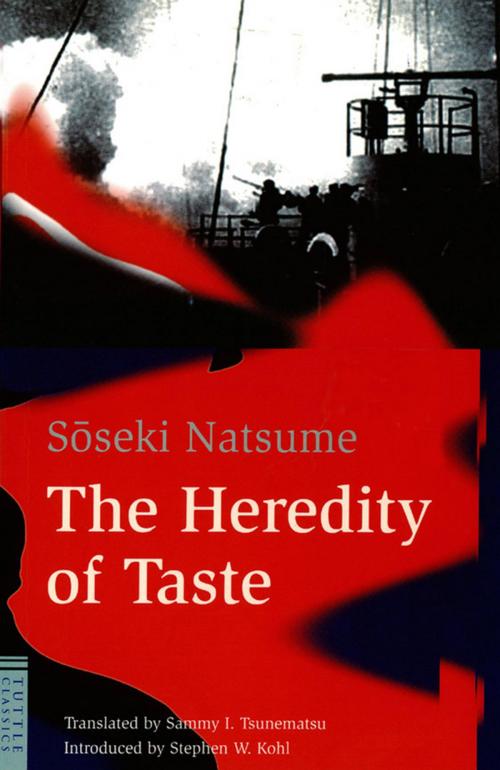| Author: | Soseki Natsume | ISBN: | 9781462904747 |
| Publisher: | Tuttle Publishing | Publication: | February 7, 2012 |
| Imprint: | Tuttle Publishing | Language: | English |
| Author: | Soseki Natsume |
| ISBN: | 9781462904747 |
| Publisher: | Tuttle Publishing |
| Publication: | February 7, 2012 |
| Imprint: | Tuttle Publishing |
| Language: | English |
Written in eight days, in December 1905, and published in the January 1906 issue of the magazine Teikoku Bungaku (Imperial Literature), Shumi no iden (The Heredity of Taste) is Soseki Natsume's only anti-war work. Chronicling the mourning process of a narrator haunted by his friend's death, the story reveals Soseki's attitude to the atrocity of war, specifically to the Russo-Japanese War of 1904-5, and to the personal tragedies and loss of individuality of young men like his hero Ko-san, and the sacrifices made by both the living and the dead.
Although the first part of the story powerfully describes the narrator's visions of the war dead, including the recurring vision of Ko-san who cannot climb out of a ditch and return from the war, it is the second half, in which a beautiful and mysterious woman appears before the narrator at Ko-san's grave, with the promise of transcendence, that grips our attention.
The story centers on finding out the identity of this woman and her relationship with Ko-san, with it's implication that what should have been a love story has been shattered by the reality of war-a reminder of the magnitude of Japan's sacrifice for it's so-called victory.
Written in eight days, in December 1905, and published in the January 1906 issue of the magazine Teikoku Bungaku (Imperial Literature), Shumi no iden (The Heredity of Taste) is Soseki Natsume's only anti-war work. Chronicling the mourning process of a narrator haunted by his friend's death, the story reveals Soseki's attitude to the atrocity of war, specifically to the Russo-Japanese War of 1904-5, and to the personal tragedies and loss of individuality of young men like his hero Ko-san, and the sacrifices made by both the living and the dead.
Although the first part of the story powerfully describes the narrator's visions of the war dead, including the recurring vision of Ko-san who cannot climb out of a ditch and return from the war, it is the second half, in which a beautiful and mysterious woman appears before the narrator at Ko-san's grave, with the promise of transcendence, that grips our attention.
The story centers on finding out the identity of this woman and her relationship with Ko-san, with it's implication that what should have been a love story has been shattered by the reality of war-a reminder of the magnitude of Japan's sacrifice for it's so-called victory.















